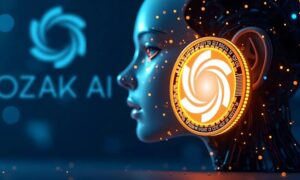India, with its diverse linguistic landscape, sees millions of daily posts blending Hindi words in English scripts, creating what’s known as “code-mixed” texts. Traditional emotion detection models, designed primarily for English, falter in this scenario due to the complexity and variability of transliterated Hindi words. Recognizing this critical gap, Mitesh and his team undertook a detailed study to develop specialized methods tailored specifically for these blended texts.
To achieve this, Mitesh collected over 9,000 tweets using Twitter’s API, carefully annotating them into seven distinct emotional categories: happy, sad, angry, fear, disgust, surprise, and neutral (no emotion). The complexity of these tweets presented several hurdles. For instance, the Hindi expression for “no” can appear as “nahi,” “nhi,” or “nehi,” among other variations, creating significant challenges in standardizing text for machine interpretation.
To tackle these challenges, Mitesh implemented a sophisticated preprocessing approach, utilizing both automated techniques and manual refinements to standardize the text data. This critical step drastically improved the accuracy of emotion detection models. Through meticulous testing, Mitesh assessed various popular machine learning and deep learning models, including Support Vector Classifier (SVC), Logistic Regression (LR), and neural networks like CNN and LSTM.
His research highlighted that the Support Vector Classifier (SVC) was notably effective, achieving an impressive accuracy of nearly 74%. This model’s ability to identify patterns within complex, noisy datasets proved ideal for deciphering emotions from code-mixed tweets.
The impact of Mitesh’s work extends far beyond academia. In a country as populous and linguistically diverse as India, understanding social media emotions accurately can significantly enhance governmental responsiveness, customer service in businesses, and public sentiment analysis. It can enable policymakers to gauge real-time public responses, businesses to handle customer relations effectively, and even assist mental health professionals in recognizing widespread emotional trends.
Furthermore, the broader implications of this research could pave the way for improved communication technologies in multilingual societies globally, enhancing cross-cultural understanding and digital inclusivity.
Mitesh is extending his research to incorporate even more advanced tools such as Google’s BERT and OpenAI’s GPT, adapting them specifically for multilingual use. By creating custom models that cater specifically to mixed-language scenarios, the accuracy and utility of emotion detection could rise dramatically.
Building work in emotion detection for Hindi-English code-mixed social media texts, recent advancements in the field have further enhanced the capabilities and applications of such technologies.
Recent studies have introduced sophisticated models and datasets to better understand and interpret emotions in code-mixed texts. For instance, the EmoMix-3L dataset encompasses Bangla-English-Hindi code-mixed data, facilitating multi-label emotion detection and highlighting the growing complexity and richness of multilingual social media content.
Moreover, transformer-based models like BERT and its multilingual variants have demonstrated significant improvements in handling code-mixed data, offering enhanced accuracy in emotion recognition tasks .
Industry Trends
The emotion detection and recognition market is experiencing rapid growth, with projections estimating its value to reach USD 113.32 billion by 2032, growing at a CAGR of 14.9% . This surge is driven by increased demand across various sectors
- Healthcare: Utilizing emotion AI for mental health monitoring and patient care.
- Customer Service: Enhancing user experience through real-time emotion analysis.
- Automotive: Integrating emotion recognition for driver safety and comfort.
- Entertainment: Personalizing content based on viewer emotions.
Innovations like Emteq’s smart glasses, which monitor facial movements to assess emotional states, exemplify the practical applications of emotion detection technologies in everyday devices
As the field progresses, integrating multimodal data—combining text, audio, and visual cues—will be pivotal in achieving more nuanced and accurate emotion detection. Additionally, addressing the challenges posed by code-mixed and multilingual data will remain a focal point for researchers and industry professionals alike.
Mitesh Sinha’s work and research not only addresses a previously neglected challenge but also establishes areas for future innovations in digital communication technology. His work underscores the importance of recognizing and adapting to linguistic diversity in an increasingly interconnected digital world, making emotion detection more inclusive, accurate, and culturally sensitive.

































